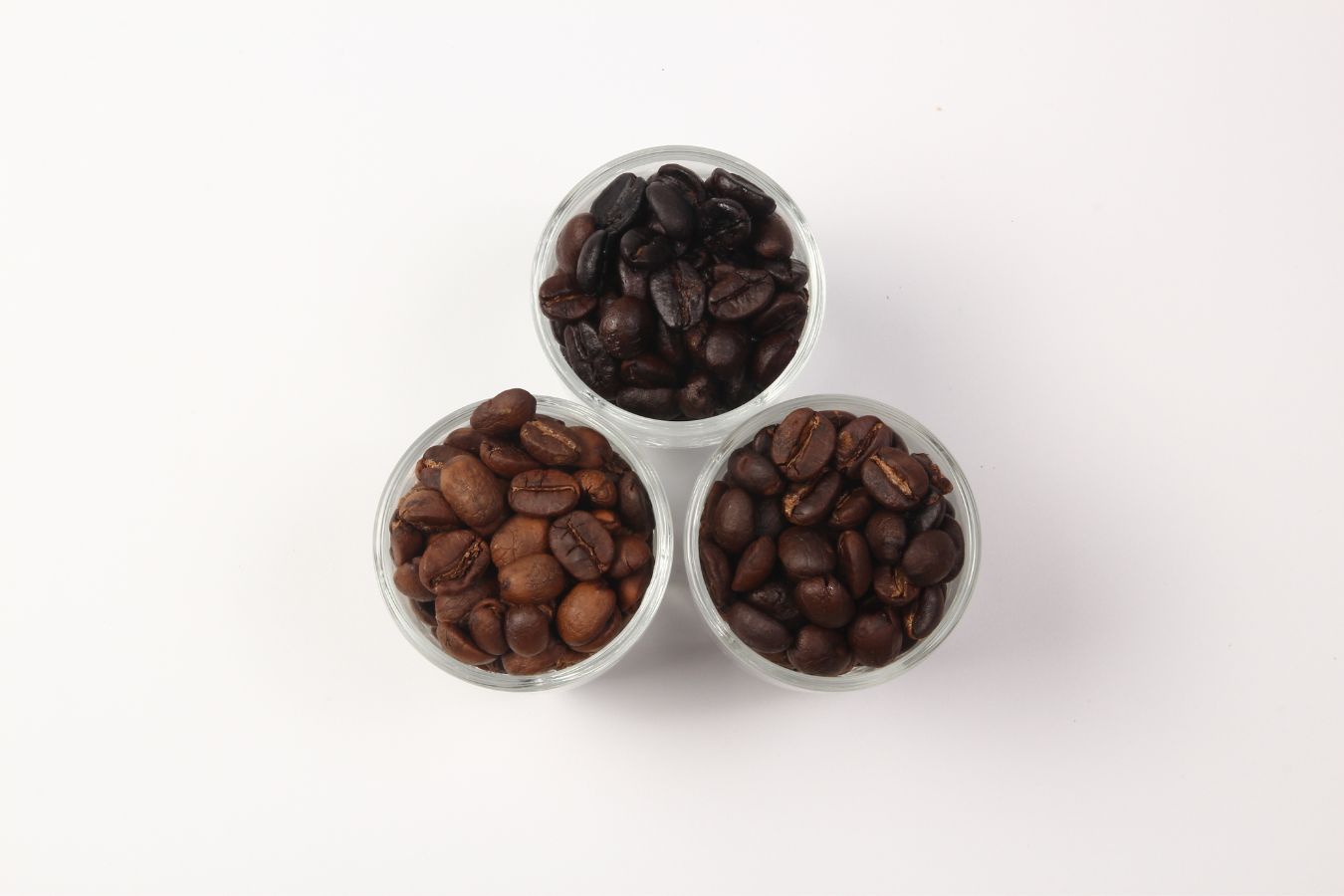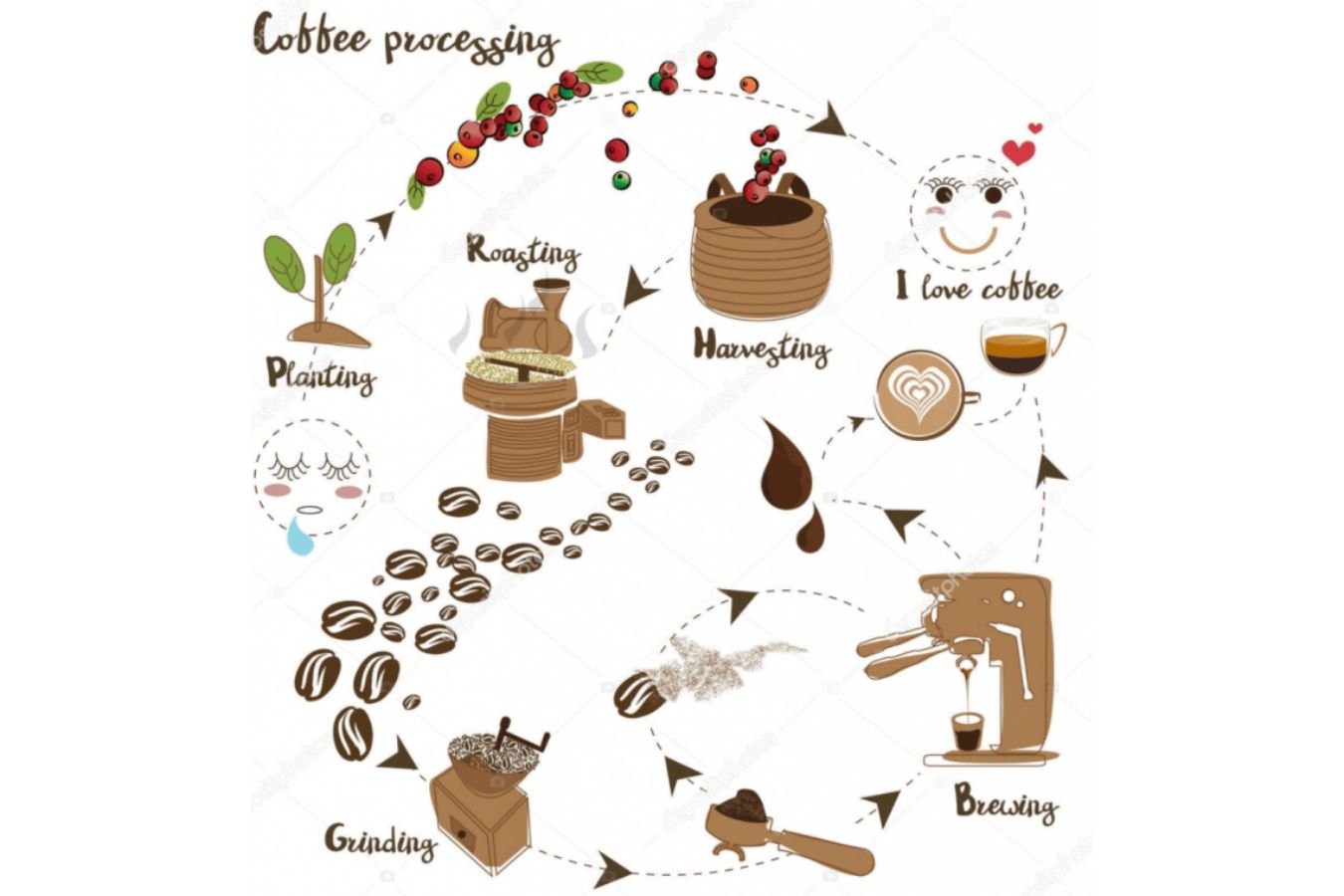
Coffee Roasting Process: The standard roasting process is the most important factor determining the taste and quality of the coffee. So how does the process of roasting coffee, coffee roasting technique meet the standard? Please read about these issues later!
Process of harvesting coffee
Before going into the process of roasting processed coffee, let’s learn about the process of harvesting and processing coffee to create coffee beans in the form of raw – the raw material used for the roasting process.
When harvesting coffee fruits, can be harvested by manual method or by machinery. However, manual implementation, although more time-consuming, will help to harvest fully ripe coffee fruits and the quality of coffee fruits is also equal. Harvested by a machine by stripping the branches quickly and minimizing the number of workers, the coffee fruits will not be uniform and there will be uncooked seeds.

After the coffee is harvested, it will be cleaned, removing dirt, sand, and branches,… This stage is important because it affects the quality of roasted coffee and helps limit the failure and degradation of coffee processing equipment.
The coffee beans are prepared to be cleaned by: Soak the coffee fruit in water, then drying it in the sun for about 2-3 days at a temperature of about 300 degrees Celsius and using tools to completely separate the outer shell.
Finally, choose coffee floor beans in sieve size 16 or 18 to create coffee products of equal size. In addition, to create a variety of flavors, it is possible to mix coffee beans together in different proportions.
The technical process of roasting delicious coffee properly
Reputable and professional coffee roasters will carry out the process of processing coffee in a certain order and technique to create products that not only ensure quality but also uniform color with a characteristic aroma. Usually, the process of roasting coffee is carried out according to the following process:
- Step 1: Choose coffee: Choose the coffee beans that have been cleaned, not mixed with impurities, colors up to standard, with large kernels.
- Step 2: Test roasting: Roast tested in small quantities to test the quality of finished products.
- Step 3: Official roasting: If the test roasted coffee beans have met the standard, the official roasting in large quantities according to the process, time, and temperature,… Just like when it comes to experimenting.
- Step 4: Cool: As soon as the roasting is finished and satisfactory, the coffee has a very high temperature. If you leave the coffee at such a high temperature for too long, it will lose its aroma of the coffee, so it is necessary to cool the coffee as quickly as possible to retain the most natural aroma. Use a blower system to remove all the silk shells and cool the coffee quickly. Then take the coffee to preserve.
- Step 5: Grind coffee: Grind or grind coffee to create coffee powder convenient for packaging or processing, use
- Step 6: Product packaging: Powdered coffee or roasted coffee beans need to be packaged to preserve to retain the strongest and most delicious taste

The coffee roasting process usually lasts only 12-20 minutes for each roast with a temperature of 180-250 degrees. During roasting, coffee beans will have many variations in size and color, taste through Marillad reactions, and caramelization,… For the most detail about the changes in coffee beans during roasting, you can see the article “What is roasting coffee processing? How does the coffee roasting process work?”